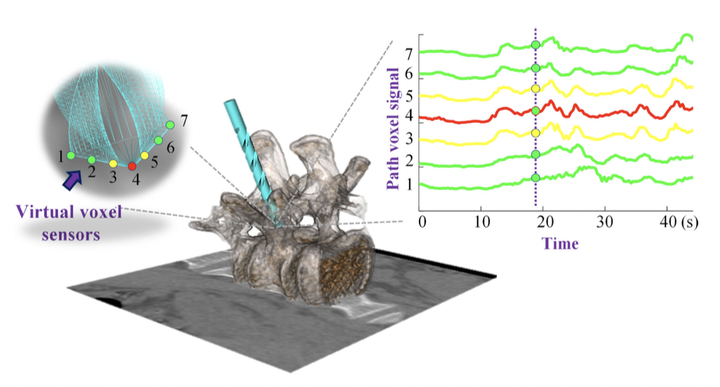
Abstract
Current surgical robots face chal- lenges to understand preoperative images like human sur- geons, which hindering robots from making full use of preoperative information to operate stably and efficiently. We offer a method to estimate drilling force information based on preoperative images to provide a priori force information for surgical robots performing bone drilling tasks. Methods: A visual sensing computing framework is proposed to help robots calculate drill-tissue contact area 3D image information in a one-dimensional signal format. Under this computing framework, a computed tomogra- phy (CT) image-weighted bone drilling mechanical model is built, which further considers both targets bone shape and material properties to predict the thrust force, torque, and radial force of a drilling process based on preoperative CT images. Results: The built model can respond to multiple bone drilling process factors, such as personalized surgery plans, varying tissue densities, uneven drilling surfaces, different drilling speeds, feed rates, and drill bit geometries. The best trust force prediction error on bovine bones is 1.13 ± 0.95 N, and the best normalized average prediction error on porcine bones is 0.07 ± 0.08. Experiments in spinal pedicle screw placement surgery also show potential appli- cation abilities. Conclusion: Our method predicts the bone drilling force well based on preoperative images, providing robots with more efficient preoperative information. Signif- icance: This work offers a new perspective to study the interaction relationship between robot surgical instruments and tissues with the assistance of preoperative images.